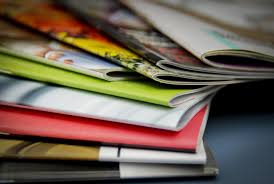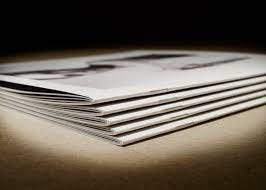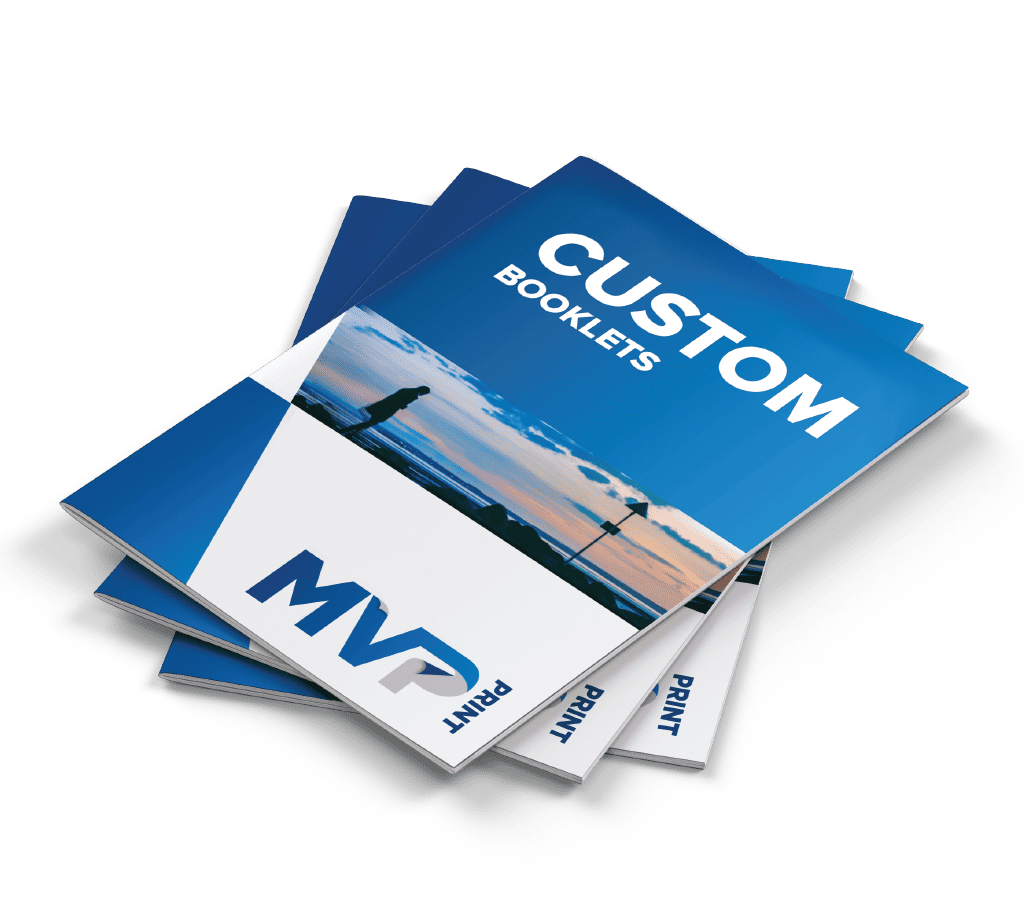
Welcome to our comprehensive guide on saddle stitched books! Whether you’re a small business owner, a designer, or simply interested in learning about saddle stitch binding, this guide is the perfect resource for beginners. Saddle stitched books, also known as saddle stitch booklets, offer a professional and cost-effective way to bind materials such as brochures, catalogs, and booklets. In this guide, we will cover everything you need to know about saddle stitching, from the enduring appeal of printed materials to the step-by-step process of crafting and designing your own saddle stitched booklets. Let’s dive in and discover the world of saddle stitch binding!
Exploring the Charm of Saddle Stitched Books
In this section, we will explore why printed materials still hold an enduring appeal in today’s digital era. We will also delve into the concept of the saddle stitch booklet and its unique benefits as a binding method.
The Enduring Appeal of Printed Materials
The rise of digital media has not diminished the charm of printed materials. From the tactile experience of flipping through a book or brochure to the immersive feeling of holding physical content, printed materials offer a sensory appeal that digital platforms cannot replicate. They provide a tangible representation of information and enable a deeper connection with the content of promotional and sales catalogues
What Is Saddle Stitching?
Saddle stitching is a popular binding method used for booklets, brochures, and catalogs. It involves folding sheets into a central spine and securing them together with staples or stitches. This method creates a booklet that opens flat and allows for easy reading and browsing.
The Benefits of Saddle Stitching as a Binding Method
There are several advantages to using saddle stitching as a binding method:
- Cost-effectiveness: Saddle stitching is a cost-effective option for binding materials. It requires fewer materials and less labor compared to other binding methods, making it a budget-friendly choice for businesses and individuals.
- Flat opening: Saddle stitched booklets open flat, which makes them ideal for showcasing images, charts, and diagrams across double-page spreads. This feature enhances the readability and visual impact of the content.
- Professional look: Saddle stitch binding gives booklets a clean and professional appearance. The staples or stitches are hidden within the spine, giving the finished product a polished and seamless look.
- Versatility: Saddle stitching can be used for various types of printed materials, including catalogs, brochures, newsletters, and event programs. Its versatility makes it suitable for both small-scale and large-scale printing projects.
These benefits contribute to the popularity of saddle stitching as a preferred binding method for booklets and brochures. Its cost-effectiveness, practicality, and professional finish make it an attractive option for businesses and individuals looking to create high-quality printed materials.
Crafting the Perfect Saddle Stitched Booklet

If you’re looking to create a visually appealing and engaging saddle stitched booklet, this section is for you. We will provide you with valuable tips and insights on planning your booklet to ensure it meets your objectives and resonates with your target audience. From considering the purpose of your booklet to selecting the right content and design elements, we will guide you through the process of crafting the perfect saddle stitched booklet.
When starting your booklet project, it’s essential to have a clear understanding of its purpose. Are you creating a promotional brochure, an instructional manual, or a product catalogue ? Defining the purpose will help determine the layout, tone, and content of your booklet.
Next, consider your target audience. Understanding their preferences, interests, and needs will enable you to tailor the content and design elements to effectively engage and resonate with them. For example, if your target audience is young and tech-savvy, you may want to incorporate vibrant colors and modern fonts to appeal to their aesthetic sensibilities.
Organizing your content is crucial to ensure a coherent and engaging reading experience. Outline the main sections and think about the flow of information. Consider how you want your readers to navigate through the booklet and what key messages you want to convey.
When it comes to selecting design elements, such as color schemes, fonts, and images, it’s important to maintain consistency and align them with your brand identity. Choose colors and fonts that reflect your brand’s personality and create a harmonious visual experience for your readers.
Finally, pay attention to the overall layout and format of your booklet. Consider the size, orientation, and number of pages to ensure it is practical and functional. Keep in mind that saddle stitched booklets are typically bound using two staples on the spine, so be mindful of the safe zone and avoid placing important content close to the edges.
By following these tips and considerations, you’ll be well on your way to crafting a visually stunning and engaging saddle stitched booklet that effectively communicates your message and captivates your audience.
The Step-by-Step Saddle Stitching Process
In this section, we will guide you through the step-by-step process of saddle stitching your booklets. Follow these instructions to ensure a smooth and successful binding process:
- Set up your document: Begin by using design software to create your booklet. Set the page size and orientation according to your desired final product. Make sure to account for bleed, which is the area outside the final trim size where content extends to avoid white edges.
- Arrange content: Organize your content of the printed pages in the correct sequence. Pay attention to the page order, ensuring that every page is in the right place.
- Design considerations: Pay attention to important design factors such as image resolution and color modes. High-resolution images will result in sharp and clear prints. Use CMYK color mode for accurate color representation.
- Prepare for printing: Once your design is complete, save the file in a printer-friendly format. Check for any errors or missing elements before sending it for printing.
Remember, attention to detail is crucial at each step of the booklet printing process. Double-check your designs, sequence, and settings to ensure a professional and polished final product.
To further enhance your understanding of the saddle stitching process, let’s take a look at a visual representation of the different stages involved:
| Stage | Description |
|---|---|
| 1 | Set up your document using design software and determine the page size, orientation, and bleed. |
| 2 | Arrange your content in the correct sequence, ensuring all pages are in the right order. |
| 3 | Pay attention to design considerations such as image resolution and color modes. |
| 4 | Prepare your file for printing, making sure to save it in a printer-friendly format. |
Mastering the Design Aspects of Saddle Stitched Booklets

In order to create visually appealing and effective saddle stitched booklets, it is important to master the design aspects of this binding method. This section will provide valuable insights on launching your design with the right software and understanding the page layout basics specifically tailored for saddle stitching.
Launching Your Design With the Right Software
Choosing the right software is crucial when it comes to designing and launching your saddle stitched booklet. There are various software options available that offer features and tools specifically designed for print projects. Popular software choices include Adobe InDesign, QuarkXPress, and CorelDRAW. These programs provide advanced layout capabilities, precise typography controls, and image editing tools, allowing you to create professional-looking saddle stitched booklets.
When selecting the software, consider factors such as your familiarity with the program, its compatibility with your operating system, and the availability of resources and tutorials to help you learn and navigate the software efficiently. It is also important to ensure that the software supports the file format required by your printing service provider.
Page Layout Basics for Saddle Stitching
The page layout basics for saddle stitch booklet printing include several important considerations that ensure a successful print outcome. These considerations include:
- Margins: Leave adequate margin space around the content of your pages to avoid text and images getting cut off during trimming.
- Page Numbering: Number your pages consistently and accurately to maintain proper sequencing.
- Creep: Account for creep, where inner pages of a saddle stitched booklet appear slightly narrower than outer pages due to the thickness of the paper. Adjust your design to accommodate this phenomenon to ensure elements don’t get trimmed off.
- Color Consistency: Pay attention to color consistency throughout your design. Use appropriate color profiles and ensure that your images and graphics are in the correct color mode for print.
By following these page layout basics, you can optimize your saddle stitched booklet design for a professional and visually appealing final product.
Saddle Stitched Books: Economical Binding for Your Publications
Saddle stitched binding offers an economical option for binding your publications. Compared to other binding methods, saddle stitching is a cost-effective choice that can help you save on your printing projects.
One of the main advantages of saddle stitching is that it requires fewer materials and less labor. With saddle stitched books, the pages are folded in half and then stapled together along the spine. This simple yet effective method eliminates the need for additional binding materials such as glue or thread.
By minimizing the amount of materials and labor involved in the binding process, saddle stitching offers significant cost savings wit an extensive range of page, size and colour options.. Whether you’re printing booklets, brochures, or catalogues, saddle stitched books are an economical choice for your publications.
| Binding Method | Materials Required | Labor Intensity | Cost-effectiveness |
|---|---|---|---|
| Saddle Stitching | Fewer materials needed | Less labor-intensive | Economical |
| Perfect Binding | More materials required | Higher labor intensity | Higher cost |
| Wire-O Binding | Additional materials needed | Higher labor intensity | Higher cost |
As the table above illustrates, saddle stitching offers a more economical option compared to other binding methods such as perfect bound booklets with a hard cover, or wire-o binding. By choosing saddle stitch for your publications, you can reduce both the cost of materials and the labor required, without compromising on the quality and professional look of your printed materials.
Whether you’re a small business owner, a marketer, or an individual looking to print booklets or brochures, saddle stitched books provide an economical and practical solution. Take advantage of the cost-effectiveness of saddle stitching and bring your publications to life without breaking the bank.
Personalising Your Saddle Stitched Publications

Choosing the Right Paper Stock and Cover
When it comes to personalising your saddle stitched publications, selecting the right paper stock and cover materials is crucial. The choice of paper stock can greatly impact the overall look and feel of your booklet or brochure. Consider factors such as thickness, texture, and finish to ensure it aligns with your brand identity and message.
Additionally, the cover plays a significant role in catching the reader’s attention. It can be made from the same paper stock as the inner pages, also known as a self-cover, or you can opt for a different material to create contrast. Choose a cover that not only protects your publication but also reflects the professionalism and quality of your content.
Custom Size and Design Features
Customising the size of your saddle stitched publications can make a big difference in how they stand out. Whether you want a compact booklet or a larger catalog, selecting a size that suits your content and purpose can enhance its visual appeal.
Furthermore, incorporating design features can elevate the look and feel of your saddle stitched publications. This can include elements like die-cutting, embossing, spot UV coating, or foil stamping. These design touches add depth, sophistication, and uniqueness to your printed materials, making them more memorable and impactful.
| Benefits of Personalisation | Enhances brand identity and message | Creates a professional and cohesive look | Makes your publications stand out |
|---|---|---|---|
| Choosing the Right Paper Stock and Cover | X | X | |
| Custom Size and Design Features | X |
Achieving a Professional Finish with Saddle Stitching
In order to achieve a professional finish with saddle stitching, it is crucial to pay attention to two key aspects: quality printing and ensuring a neat and durable staple finish. These factors contribute not only to the visual appeal of the final product, but also to its overall quality and longevity.
Quality Printing Makes a Difference
When it comes to saddle stitched books, quality printing can make a significant impact on the final outcome. By investing in high-quality printing, you can ensure that the colors are vibrant, the images are sharp, and the text is clear and legible. A professional finish starts with professional printing, so it’s important to choose a reputable printing company that uses state-of-the-art equipment and employs skilled technicians.
Ensuring a Neat and Durable Staple Finish
The staple finish of a saddle stitched booklet plays a crucial role in its overall appearance and durability. To achieve a neat and durable staple finish, it is important to select the right materials and employ proper techniques for securing the staples. Using high-quality staples that are designed for saddle stitching ensures that the booklet stays intact and withstands regular use. Additionally, using a professional saddle stitching machine or hand tools can help ensure that the stapling is done accurately and securely.
By paying attention to both quality printing and the staple finish, you can achieve a professional and polished result with your saddle stitched books. This attention to detail will not only enhance the visual appeal of your printed materials, but also leave a lasting impression on your audience.
Diverse Applications of Saddle Stitched Booklets

Saddle stitched booklets offer a wide range of applications across various industries. Their versatility makes them an ideal choice for a variety of printing needs. Let’s explore some of the diverse applications of saddle stitched booklets:
- Marketing and Promotional Materials: Saddle stitched booklets are commonly used for creating effective marketing brochures, sales catalogs, and product guides. Their compact size and professional appearance make them perfect for showcasing your products and services to potential customers.
- Educational Materials: Saddle stitched booklets are also great for educational purposes. They can be used to create user manuals, instructional guides, training materials, and educational workbooks. The ease of flipping through the pages and the ability to lay flat make them practical for delivering information to learners.
- Event Programs and Directories: Saddle stitched booklets are often used for printing event programs, conference schedules, and directories. They provide a concise and organized format to present important information to attendees, enabling them to navigate the event smoothly.
- Cookbooks and Recipe Booklets: Saddle stitched booklets are popular choices for creating cookbooks and recipe booklets. They allow for easy flipping through pages while following step-by-step instructions, making them convenient for culinary enthusiasts.
- Employee Handbooks and Training Manuals: Saddle stitched booklets are frequently used for compiling employee handbooks and training manuals. The compact size and durability make them ideal for providing essential information to employees in a concise and readable format.
These are just a few examples of the diverse applications of saddle stitched booklets. Their flexibility and functionality make them suitable for various industries and purposes. Whether it’s marketing, education, events, or documentation, saddle stitched booklets offer a professional and efficient solution for your printing needs.
| Industry | Applications |
|---|---|
| Marketing | Brochures, catalogs, product guides |
| Educational | User manuals, instructional guides, workbooks |
| Events | Programs, schedules, directories |
| Cooking | Cookbooks, recipe booklets |
| Corporate | Employee handbooks, training manuals |
Conclusion
Through this comprehensive guide, we have explored the world of saddle stitched books and their numerous advantages. Saddle stitching offers a cost-effective and professional binding method for a variety of printed materials such as brochures, catalogs, and booklets. Its enduring appeal in the digital era is evident, showcasing the importance of quality printed materials.
As beginners, you now have a solid understanding of the saddle stitching process, from crafting the perfect booklet and selecting the right paper stock, to achieving a professional finish and exploring its diverse applications. Saddle stitching allows you to personalize your publications while maintaining a budget-friendly approach.
If you’re ready to bring your printing projects to life, consider MVP Print as your trusted provider of high-quality saddle stitched products. We have the expertise and resources to help you create visually appealing and engaging saddle stitched booklets that meet your unique needs. Embrace the charm of saddle stitched books and unlock the endless possibilities they offer for your business, marketing, and educational endeavors.
FAQ
What are saddle stitched books?
Saddle stitched books are publications that are bound together using wire staples along the spine. They are commonly used for brochures, catalogs, and booklets.
Why are printed materials still popular in the digital era?
Printed materials have an enduring appeal because they offer a tangible and tactile experience for readers. They can be easily flipped through and provide a sense of permanence and credibility.
What are the benefits of saddle stitching as a binding method?
Saddle stitching offers several advantages, including cost-effectiveness, the ability to open flat without damaging the spine, and a professional look. It is also suitable for small booklets with a lower page count.
How do I plan and design a saddle stitched booklet?
When planning a saddle stitched booklet, consider its purpose, target audience, content, and design elements. Outline your objectives, organize your content, and select color schemes, fonts, and images to create an engaging and visually appealing booklet.
What is the step-by-step process of saddle stitching?
The process involves setting up your document using design software, arranging the content in the correct sequence, and preparing the file for printing. Consider factors such as page order, bleed, image resolution, and color modes for high-quality printing results.
What software should I use for designing saddle stitched booklets?
There are various design software options available, such as Adobe InDesign, that are specifically tailored for booklet design. These programs provide comprehensive tools and features for creating and launching your saddle stitched booklet design.
How can I achieve a professional finish with saddle stitching?
To achieve a professional finish, ensure quality printing by using high-resolution images and selecting the right materials. Additionally, pay attention to the neatness and durability of the staple finish by using appropriate techniques and materials.
What are the applications of saddle stitched booklets?
Saddle stitched booklets have diverse applications across industries. They can be used for marketing and promotional materials like sales catalogs and brochures, as well as for educational materials such as manuals and instructional guides.







